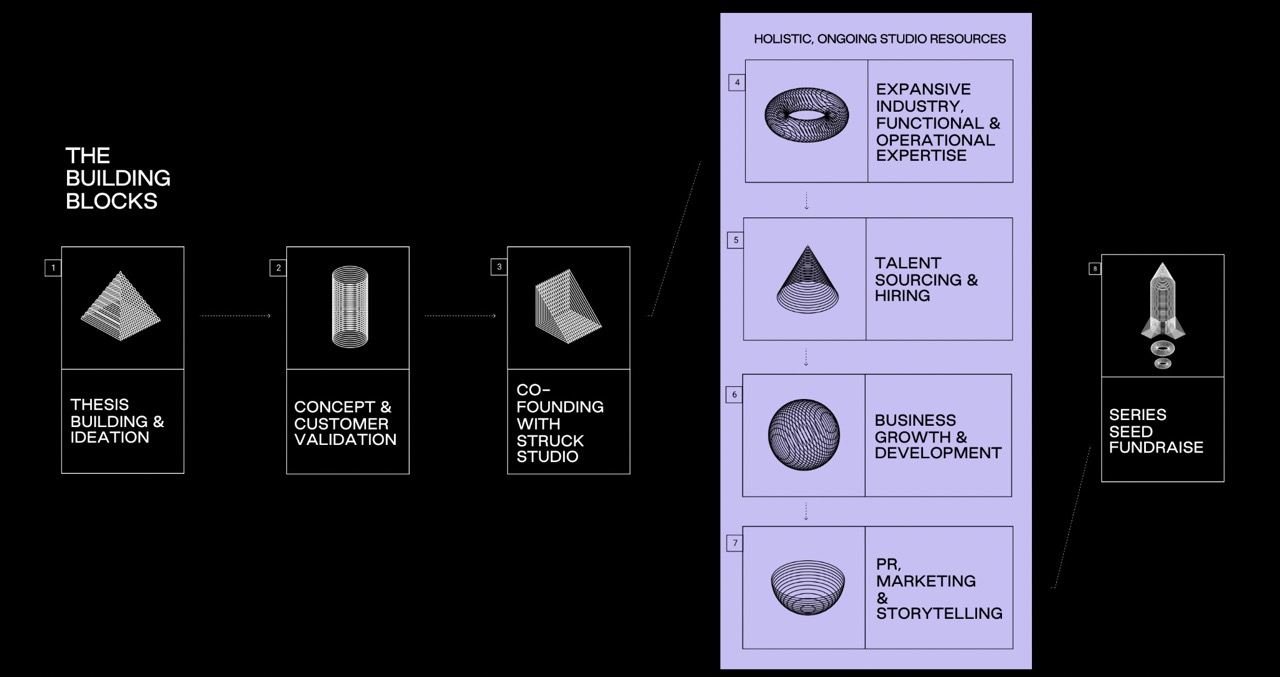What do you do when you get pitched by a bunch of really good startups, but you think you can do even better? You roll yours, of course. Or at least that’s what struck capital is turning a corner with a $15 million fund and a team of experienced company builders, in addition to its existing $220 million AUM funds, with LPs featuring Leo DiCaprio.
The new studio is led by Adam Struck and Michael Montero (CTO and co-founder of Resy, which sold to american express a while ago), along with President Tom Ryan (CEO/Co-Founder of Pluto TV and current CEO of Streaming at Paramount), Struck Studio is turning the typical VC model into a game changer. Instead of finding founders with a great idea and throwing money at them, Struck Studio is running some sort of venture studio and instead building products, building companies, and then presumably going to a spin class to keep up with the rotating theme. .
There are some interesting models out there that are somewhat similar. Entrepreneur First help people find co-founders to start businesses, VentureDevs builds products and companies with a portfolio approach and The Rainmaking studio is working with corporate partners launch startups in a new external R&D model, for example.
“We see trends before they happen, we see problems that have dozens of companies trying to solve them.” adam hit
Struck is taking a slightly different approach. The studio has in-house engineers, designers, marketers, strategists and, most importantly, asymmetric access to information from its portfolio companies. Struck Studio will come up with its own ideas, validate them, create MVPs, financially back the companies, and then recruit the right CEO to co-found and lead it.
I didn’t love how the company specifically mentions “the thousands of pitches they receive” as part of their company-building data entry; Founders are concerned enough about having their ideas “stealed” when they share their decks and information with potential investors. I usually tell startups that they care that “investors have better things to do than take their idea and try to build a company” but when that’s literally the Struck Studio model, things get a bit little more cloudy.
“What was interesting for us, especially in 2021 when valuations were through the roof, we found that the founders weren’t allowing us to do much diligence. The companies we were looking at have a lot of technical and operational debt, even if they had signs of product/market fit. We realized that since we’re seeing thousands of deals a year and we’re all former carriers, we have a lot of information asymmetries,” Adam Struck said in an interview with me last week. “Essentially we do all the product ideation, validation and development on our own. We think we can do a great job of that just because we can flex the information asymmetries that we have as a byproduct of running Struck Capital and Struck Crypto.”
I questioned whether I would pitch my own startup to Struck, given the above, and clarified with the Struck team how they operate. I asked them “how does a founder know that Struck Studio won’t ‘steal’ the idea from him?”
“We never steal ideas. The biggest point here is that we actually learn more from the pitches we make. No they receive than what we do, as far as Struck Studio is concerned,” Struck replies when I ask him the above. “We see trends before they happen, we see problems that dozens of companies have trying to solve. And we see major problems that no one else is working on. Those are the areas where Struck Studio fits. We see so many ideas and look at so many markets, so we develop information asymmetries that we understand where the puck is headed, where there are new opportunities, and which markets are tailwinds and ripe for innovation. .”
In any case, once Struck Studio finds signs of product/market fit, it looks for an experienced entrepreneur to run the business. Struck describes it as win/win; founders may not have the risk appetite to leave their current careers.
“We can go to [the entrepreneur] and say, listen, we have a sense of fit between the product and the market. We have identified your buyer persona, we have amazing investors around the table, come join us and we will give you 50% of the company and spin it off,” says Struck. “From our perspective, it fits very well in the fundraising environment right now.”
The model introduces an interesting dynamic; Usually, if an early-stage investor somehow ends up with half of the company, the cap table looks a bit shaky; it means there is less incentive for founders to perform and push for a big exit. The studio doesn’t think that’s a big deal.
“It’s really critical to us that the venture funds that choose to partner with the studio and lead to subsequent funding rounds don’t consider the 50% that the studio owns as dead capital. It’s really critical for us to not only play a big role in conceptualizing the company and getting it to a point where it doesn’t fit the product market, but to really leverage our platform,” says Struck. “We feel like we have enough of a platform and enough of a system that we can continue to add value. We leveraged Mike and Tom and the entire studio to continually help with recruiting and talent acquisition, to continually help with product creation, technology creation, buyer scouting, and help on the business development front. We are continuously involved with these companies. So we see it as a very positive thing, not a negative thing.”
